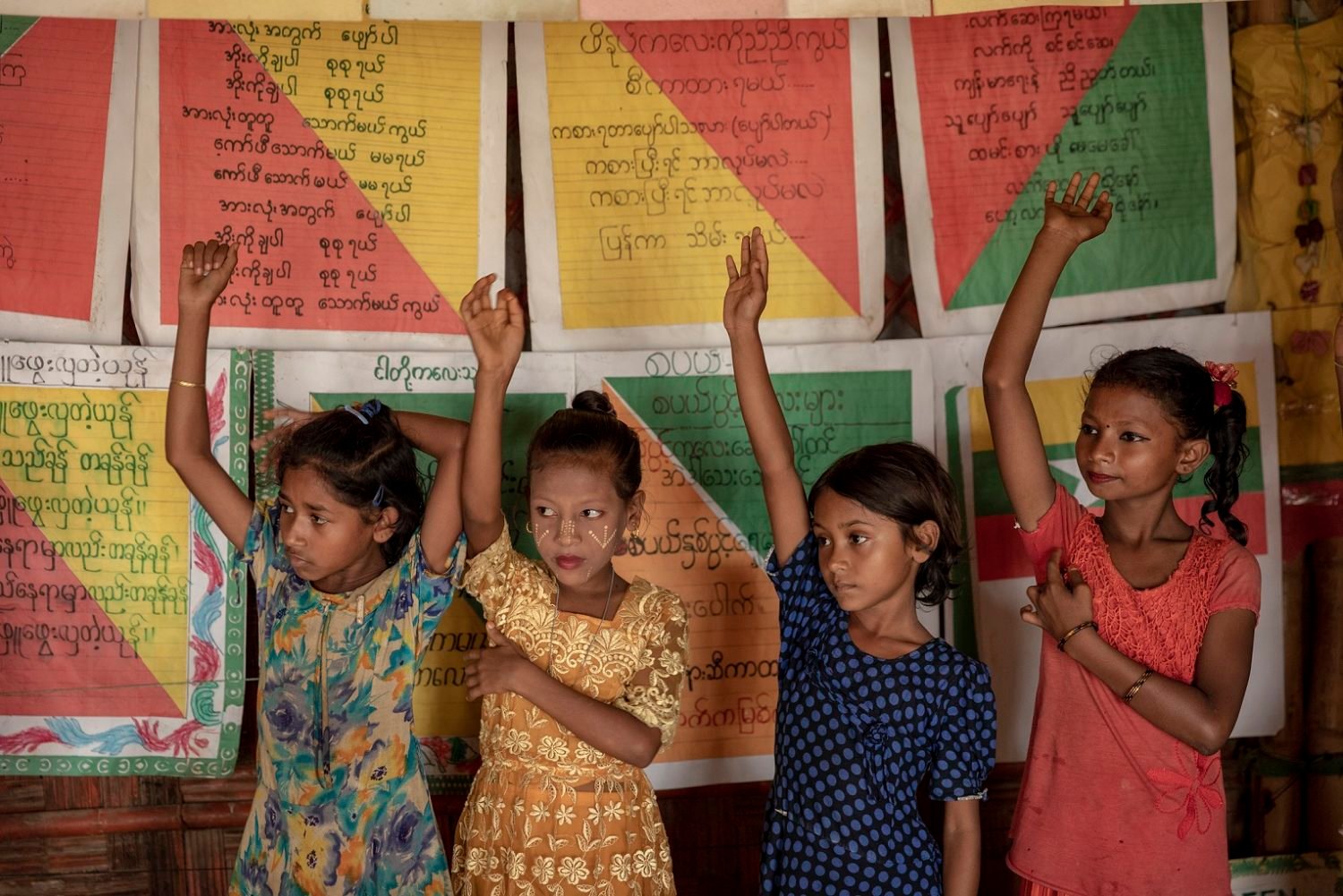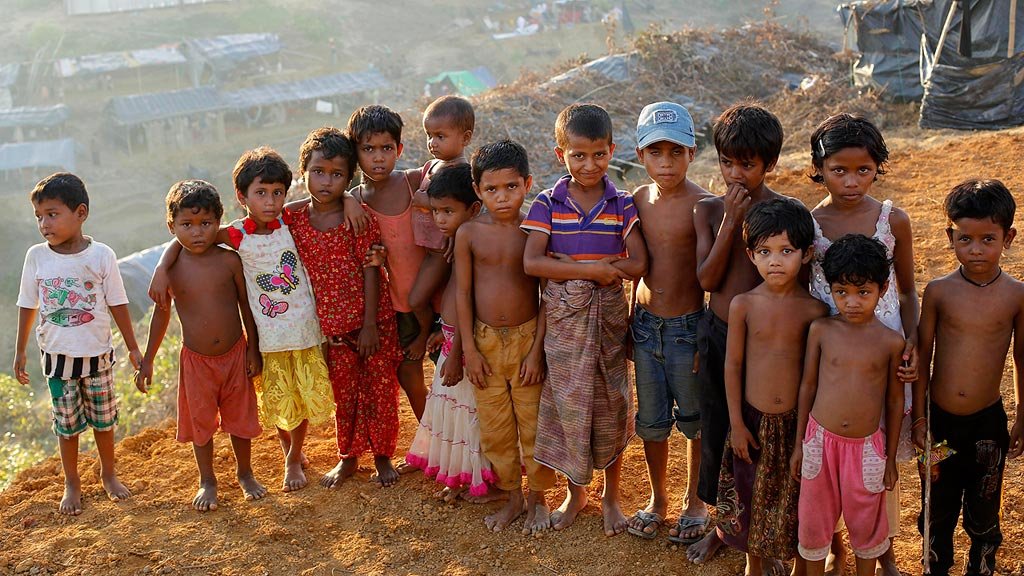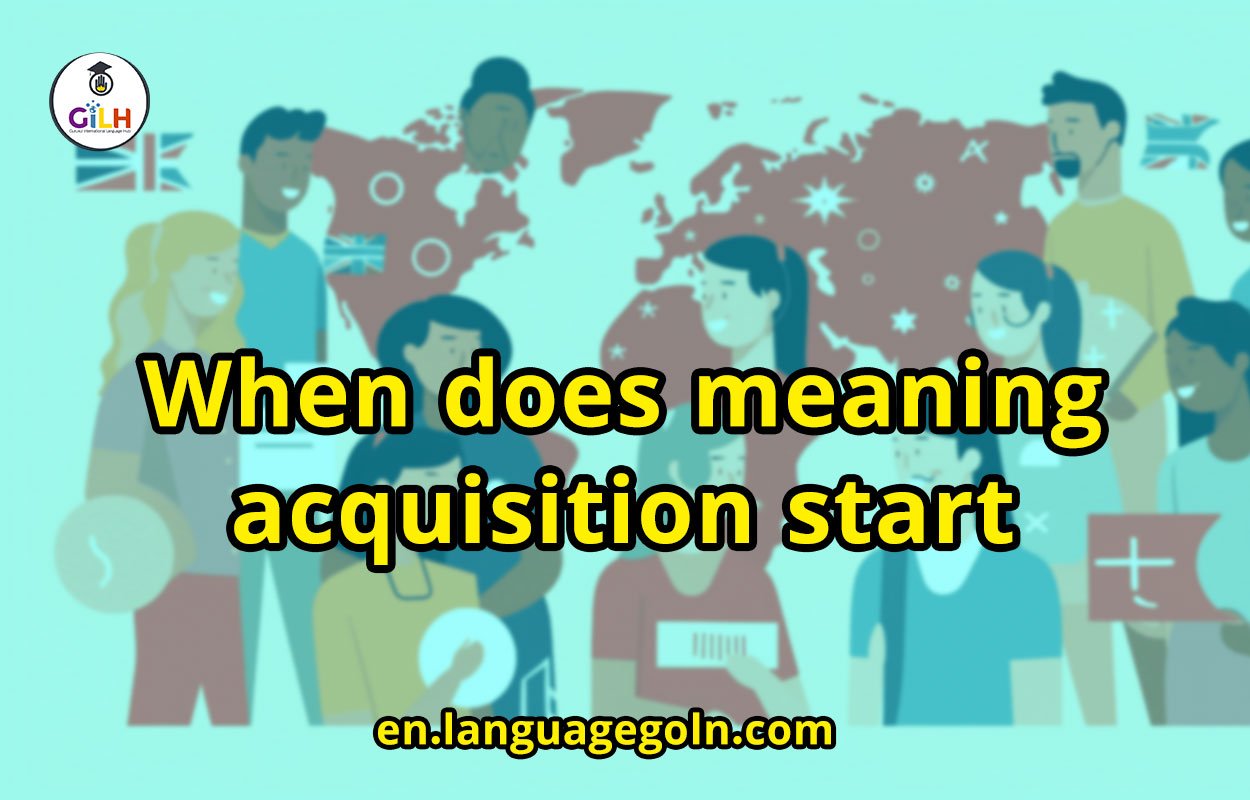Today our topic of discussion is – When does meaning acquisition start
When does meaning acquisition start
The rate at which children reach their milestones in speech and development depends
on a few factors and it may vary. Mostly it depends on the child and their surroundings. Some children develop certain speech and language skills faster than others and some children take longer to develop those abilities.
Children start using single word like units around at age 1year (or to 1.5 years). The one word stage is significant to children’s development as they use the constant language unit to communicate. Children voice meaningful intentions before they start using language (holophrases) from much earlier in life.

According to Halliday (1974) early acts of communication are certainly meaningful, but they are not yet systematic, there are no intentional choices of meaning expression even though they are directed towards an addressee.
The meaning potential of the child develops through language, along with brain and the body development. The child learns to move his head, roll over, and he is becoming
increasingly curious accordingly. When his caregiver interprets his squeaks and sounds semiotically, real world significance is given to his communication acts. With time, this confluence of experiences (ie., development of brain and body; expression/reaction) creates the conditions for emergence of stable, recognizable, even predictable signs or pairs of content/expression (Bloom, 1998).
Gradually, the child’s speech and listening skills become more integrated and he starts to learn new sounds, words and meaning of non- speech sounds. Starting from 12 months- child may meaningfully verbalize words, and may babble while looking at a book. By 18 months the child may use up to 20 meaningful, jargon mixed words. (although many babies may not use recognizable words).
Request phase begins at this time period. Memory is also developed in this time period (18 months onwards) and if the child hears the word at the end of a sentence (Halliday, 1974), he can remember one item.
Request is made when the child points or reaches something he/she wants. Usually the child shifts his or her gaze from the parent (or the communicating person) to the object, therefore the purpose is non-social. Development joint attention is the way to serve the social purposes is the. Joint attention comes when the child asks for something that has the purpose of being social, sharing and experiencing.

It is very important to know that although communication begins long before the first words are spoken, joint attention is an essential skill that is necessary for speech, language and social (pragmatic and semantic) development (Tomasello, 2000). It makes it easier to share intentions, thoughts, memories, observations and experiences with others.
It is easier for a child to respond to another person’s request for joint attention (parent pointing at a bird and asking the child to look, and the child looking at that too). The initiation of joint attention
is an indicator of the child’s social motivation. As children grow older, they try to add vocalizations or words with joint attention and successful communication begins.
When the child (12-18 months) begins to use combination of gestures and words/
vocalizations to ask for things (e.g. palm spreading and asking for more or giving something), the list of recognizable words is very small and it is likely that his understanding of words far exceeds his use of words (O’Grady, 2005).
Child may imitate some of the words, but is unaware of the meaning. The mixture of verbalization, vocalization and gesture enables them to communicate needs, wants, and greetings and to express their emotions. Their expressive language will be limited and serve only as a part of a much bigger picture of communication and meaning making, which only develops. The child is on his or her way of understanding more words, learning social skills (like turn taking), developing prosodic features (intonation and rhythm) in speech and using gestures as well as facial expressions.
Gradually children start using two word utterances with better understandings of syntax and semantics. Their semantic features of this age (18-24 months) include-
comprehension of single words for objects out of sight
- listen to the simple stories
- average expressive vocabulary of 200-300 words (by 24 months)
- says their own name on request
- respond to questions (yes/not primarily)
some verbs and adjectives begin to be used
semantic relations understood and spoken include-
From 18 months onwards children interact with the world around them by forming internal pictures that they have seen previously and full understanding of object permanence.
This stage is very important in cognitive development because it indicates that children see the world more objectively knowing that it exists independently of their perceptions and actions (Rochat, 2003).
One thing is very vital when studying child language acquisition which is, gender difference in language development. Gender difference plays a key role in increasing the linguistic abilities in children. Even in similar environmental conditions language acquisition differs between boys and girls (Genishi, 1988).
Biological evidence shows that language processing is more abstract in girls than it is sensory in boys. There is an accepted age range in which most children begin to speak, which is 18-24 months; girls are more likely to speak at the beginning of this timeline than boys at the later end.

Studies even suggest that gender differences in children’s speech also occur because boys tend to create visual and auditory associations at a time; all because the development of early childhood speech in boys’ in the left hemisphere is different from that of the same aged girls’ (Adani & Cepanec, 2019).
But the differences fade out as the child grows up. But all boys do not lag behind or have a hard time developing their speech; it depends even on how parents help, games, activities and everyday conversation. I addition, playing and interacting helps a lot during the speech development period.
See more
